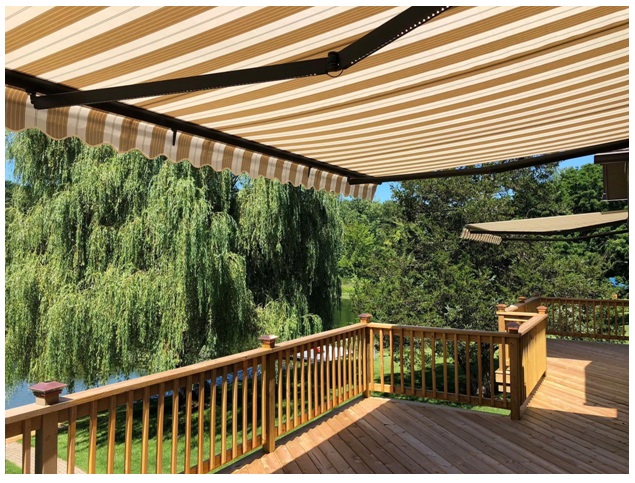It’s vital to adopt eco-friendly practices in today’s world. Our homes are crucial in reducing carbon footprint and making sustainable choices. Discover stylish, eco-friendly house awnings and their benefits in this blog post. Join us in discovering how house awnings can help you have a greener and more cost-effective lifestyle.
Energy Efficiency
House awnings increase energy efficiency by blocking direct sunlight and preventing excessive heat from entering your home during summer. This feature reduces air conditioning and energy consumption while naturally allowing the sun to warm your home in colder months. Use these awnings for an energy-efficient and eco-friendly home.
Reduced Cooling Costs
Awnings for houses can significantly lower your cooling costs by providing shade and reducing heat gain. By preventing the sun’s rays from directly hitting your windows, awnings keep the interior of your home cooler, alleviating the need for continuous air conditioning. Opting for these awnings presents a more sustainable and eco-friendly way to cool your home, benefiting your wallet and the environment.
Preservation of Furniture and Flooring
The sun’s UV rays can cause significant damage to your furniture, flooring, and other interior elements. Awnings for houses act as a protective barrier, shielding your valuable belongings from direct sunlight. By preventing UV exposure, awnings help preserve the colour, texture, and overall condition of your furniture and flooring, reducing the need for replacements or repairs.
Water Conservation
During rainy seasons, awnings for houses play a crucial role in water conservation. Directing rainwater away from your windows and doors helps prevent water damage and reduce the risk of leaks and moisture-related issues. Additionally, by incorporating rainwater harvesting systems, you can collect and reuse the water that falls onto the awnings, further promoting water conservation and reducing reliance on traditional water sources.
Sustainable Material Options
When choosing house awnings, you can opt for sustainable and eco-friendly materials. Many awnings are now in recycled materials such as polyester or acrylic fabrics. These materials not only reduce waste but require fewer resources during the manufacturing process. Selecting awnings from sustainable materials aligns with your commitment to a greener lifestyle and encourages using environmentally friendly products.
Outdoor Living Comfort
Awnings for houses extend your living space outdoors, creating a comfortable and shaded area to relax and entertain. By utilising your outdoor space, you reduce the need for additional indoor space, thereby minimising the environmental impact of construction and heating or cooling requirements. This outdoor space encourages a closer connection to nature and a more sustainable way of enjoying your home.
Conclusion
Discovering the eco-friendly benefits of awnings for houses reveals their true potential beyond their aesthetic appeal. These awnings contribute to a more sustainable lifestyle by improving energy efficiency, reducing cooling costs, preserving furniture, and promoting water conservation. By embracing these environmentally friendly options, you create a greener home and inspire others to make conscious choices for the planet.
